Researchers Develop Technique to Improve Durability of Perovskite Solar Cells
Researchers Develop Technique to Improve Durability of Perovskite Solar Cells
A team of international researchers has developed a new technique that could significantly enhance the durability of perovskite solar cells, a promising emerging technology in photovoltaics. The technique, described in a recent study published in Science, could be an essential step towards commercializing perovskite solar cells and reducing their cost.
Perovskite solar cells are different from traditional solar cells as they are made from nano-sized crystals rather than high-purity silicon wafers. The perovskite crystals are dispersed into a liquid and spin-coated onto a surface using low-cost and well-established techniques. These types of solar cells have the potential to overcome the inherent efficiency limitations of silicon solar cells.
One key vulnerability point is the interface between the perovskite layer and the adjacent layers, called the carrier transport layer. These adjacent layers extract the electrons or holes flowing through the circuit. In cases where the chemical bonding between these layers and the perovskite layer gets damaged by light or heat, the electrons or holes can’t get into the circuit, which lowers the cell’s overall efficiency.
To address this issue, the international research team used computer simulations based on density functional theory (DFT) to predict what kind of molecules would best create a bridge between the perovskite layer and the charge transport layers. The simulations predicted that Lewis acids containing phosphorus would have the best effect.
In the lab, the team tried out various formulations of phosphorus-containing molecules and discovered that the best performance came from a material known as 1,3 bis (diphenylphosphino)propane, or DPPP. The team built inverted perovskite solar cells that contained DPPP and some without it. The team found that, with DPPP, the overall power conversion efficiency of the cell stayed high for approximately 3,500 hours under ambient conditions, without additional heating. This represents a considerable improvement compared to previous records, where perovskite solar cells tend to see a significant drop in their efficiency after 1,500 to 2,000 hours.
The team has applied for a patent for the DPPP technique and has received interest from commercial solar cell manufacturers. The researchers believe that their approach represents a new path forward, where DFT simulations and rational design can point the way towards promising solutions.
In recent months, other researchers have also made strides in perovskite solar cell research. Researchers at the École Polytechnique fédérale de Lausanne and Sungkyunkwan University in South Korea identified the cause behind the degradation of perovskite solar cells and developed a technique to improve their stability. Meanwhile, researchers at the Helmholtz-Zentrum Berlin achieved efficiencies of well above 24% for perovskite solar cells that are resistant to drop under rapid temperature fluctuations between -60 and +80 degrees Celsius over one hundred cycles.
The progress being made in perovskite solar cell research is exciting and shows promising potential for this technology to play a significant role in meeting our energy needs in the future. With continued development and investment, perovskite solar cells could become a cost-effective and efficient solution for renewable energy generation.
Suggested Articles
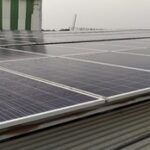
How Are Solar PV Modules Made? Complete Guide to the Manufacturing Process
Choosing the right solar panels can be confusing with so many options in the market. This guide simplifies solar panel selection by comparing types, efficiency ratings, and cost factors. Whether for your home, business, or industry, learn how to make an informed decision and maximize the return on your solar investment.

Solar Rooftop: अपने घर को बनाओ खुद का पावर हाउस | Complete Guide
सौर रूफटॉप सिस्टम आपके घर को पावर हाउस बना सकता है। यह न केवल बिजली के बिलों में बचत करता है, बल्कि साफ और नवीकरणीय ऊर्जा भी प्रदान करता है। जानें सौर पैनल की इंस्टालेशन प्रक्रिया, लागत, लाभ और कैसे यह आपके घर को आत्मनिर्भर ऊर्जा का स्रोत बना सकता है।
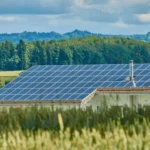
Difference Between Solar Power and Photovoltaic: Explained Simply
Total solar PV power represents the combined power output of a solar photovoltaic system. This guide explains its meaning, calculation, and how it directly impacts solar performance, efficiency, and long-term energy generation.

Developers fear unfair state-specific levies will make solar more expensive
Developers in India are concerned that state-specific levies on solar projects could increase costs, slow adoption, and impact the growth of renewable energy across residential, commercial, and industrial sectors.
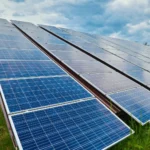
500 kW Solar Power Plant Cost in UP 2025 | Latest Price, Subsidy & ROI
Thinking of setting up a 500 kW solar power plant in Uttar Pradesh? Discover the 2025 cost estimate, available subsidies, and expected ROI. Learn how commercial and industrial projects in UP can reduce energy expenses and achieve long-term savings with solar energy.
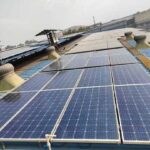
Solar Rooftop Projects: Benefits of Intentional Islanding for Power Backup
Discover the role of intentional islanding in solar rooftop projects. Ensure continuous power supply, system safety, and reliable energy even during grid failures.

Minimum Land Requirement for Solar Power Plants in India
Understanding the land requirement for solar plant projects in India is essential for accurate planning and approvals. This article explains minimum land needed per kW and MW, key influencing factors, and differences between rooftop and ground-mounted solar plants.
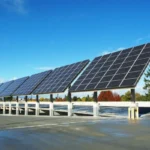
Should You Switch to Solar in India? Complete Guide
India has become a hot-selling solar market and people are interested in installing solar systems in their homes as well as in industries and factories.